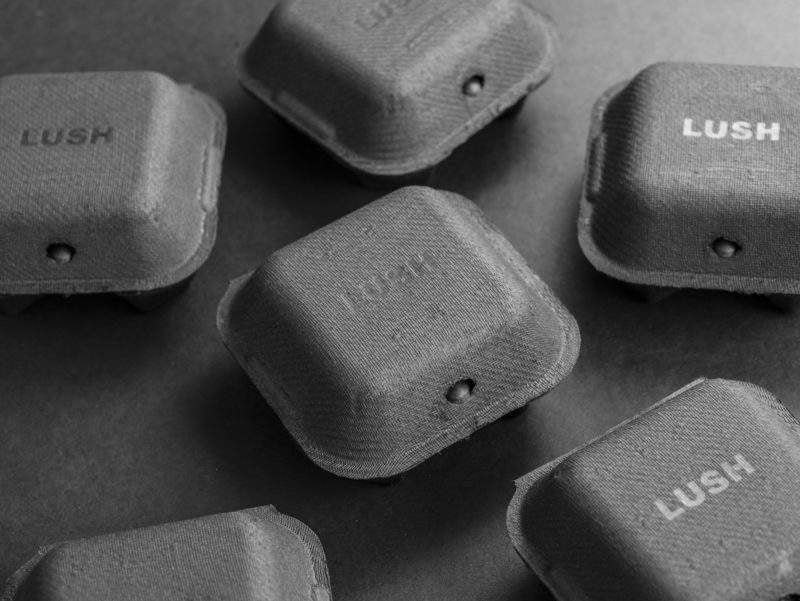With plastic being demonised throughout the packaging industry, many brands are looking at new ways to cut plastic out of their designs, opting for sustainable alternatives instead. Colourform is a product from paper-maker James Cropper that the company hopes will carve out a new niche in the packaging space.
Using moulded fibre techniques to create formed paper-based packaging, Colourform looks to be a creative, sustainable alternative to plastic. The product can even be created out of the recycled coffee cups that James Cropper’s recycling plant has become known for.
Colourform commercial director Susan Wilson discusses how the moulded fibre process works, and how the product can be utilised within the packaging marketplace.
Elliot Gardner: How long has James Cropper been involved with moulded fibre as a process?
Susan Wilson: We began manufacturing for Colourform around 18 months ago. It started off with us looking at what’s happening around the world, and thinking about what we could do to contribute to sustainable packaging.
Around 18 months ago we started making moulded packaging. It’s been a big learning process of course, but we’ve got all that expertise working with colour and fibre behind us. We are the new guys on the block but we like to think we’re thinking differently and doing things differently, and that we can offer design-led creative freedom.
EG: Tell me more about how the moulded fibre process works
SW: Essentially it begins in very much the same way as with a paper machine. You start with a lot of wood or recycled pulp, and add water – around 99% water to pulp – in a big blender. You end up with this paper soup – we call it the stock – which then goes into a forming machine.

US Tariffs are shifting - will you react or anticipate?
Don’t let policy changes catch you off guard. Stay proactive with real-time data and expert analysis.
By GlobalDataWe use aluminium moulds to create the shapes, which is dipped into the stock, then transferred, dried, pressed and vacuumed to create a shape. The process takes less than a minute; you go from liquid to dry very quickly.
EG: Is this a new process? Or just something that James Cropper has decided to expand into?
SW: Shaped moulded fibre has been around for a while. You’re probably more familiar with egg box technology, but this is a completely different and more refined technique.
It’s a very controlled process. We’re currently building up our colour expertise, after all, a brand’s colour is a way of communicating to their audience, so we’ve developed techniques for very precise colour matching and for various kinds of finishes, and ensuring they’re consistent between batches.
EG: How much customisability is there for a brand that might want something specific for their product?
SW: Lots of brands start with a vague idea of what they want, others provide us with an example of their merchandise and ask us to develop something around it, and others have a fully formed idea they want realising.
We will work with the brand. We look at their design, and check with them if it’s what they really want or if they’ve just been limited by the technology they’ve seen in the past. Brands, of course, have quite a lot of input, it’s their product after all, but we provide a lot of choice.
We say to brands ‘that’s what you’ve asked for, but what would you really like?’ We have some fantastic designers on board who literally think outside of the box. In most cases, brands are quite pleasantly surprised at how much freedom and choice they have.
We go in with the mindset of creating something aesthetically pleasing and sustainable, we go beyond just manufacturing a piece of packaging that’s fit for purpose, it’s more than just practicality.
EG: Can you tell me more about your sustainable approach?
SW: Sustainability is at the heart of what we do here at James Cropper generally. All the pulps we buy in are all from renewable sources and are FSC and PEFC certified. We use raw materials that’re recycled too. You might’ve heard of our cup-cycling plant for example. We can upcycle the high-quality fibre from coffee cups into paper or even into Colourform.
The products we make are biodegradable, recyclable, and renewable. In terms of the Colourform product itself, when it becomes part of packaging, and it could be part of a rigid box or a folding box also made of paper, the consumer doesn’t need to separate out their packaging for recycling purposes. You can just recycle the whole lot.
The whole point of our papermaking and of Colourform is that it’s a natural product, it’s not going to harm the environment, and it’s not going to kill wildlife. If it ends up in the sea, it’ll biodegrade, not hang around for however many years.
EG: Did you run into any challenges when developing the product?
SW: It’s been quite a smooth process. As we’ve learned and expanded into different markets, we’ve seen how brands are using their packaging. We come back and try to figure out if it’s something we can do too. We’ve also been quite agile in responding to questions from the market.
Every project has thrown us new challenges, but they’ve all be quite positive ones – whether it’s been pushing our designs further, or figuring out how to get a certain colour. There’s always willingness at James Cropper to try new things, and that spans across the whole organisation.




